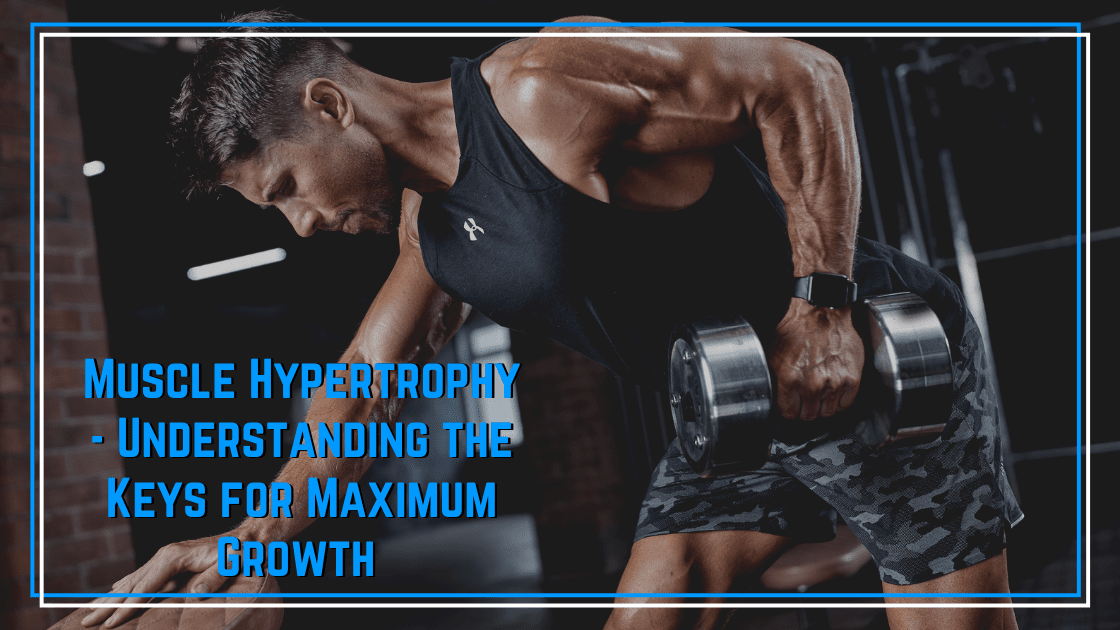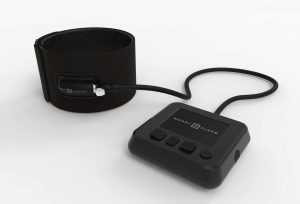If you thought you were going to get an article on the best rep ranges to build muscle then guess again. Instead, you’re going to find out how to optimize each and every one of those reps to build maximum muscle while allowing you to remain injury-free. Not all reps are created equal. Here’s how to get the most out of yours for the specific goal of muscle hypertrophy to look better without your shirt on.
Muscles don’t give a damn!
Your muscles don’t have eyes to see how much weight you can handle. Nor do they care as much as you think about what you’re lifting for 6, 8, 12, or any other number of reps. While progressively overloading your muscles is important in order for them to grow, the term progressive overload is often used incorrectly and mistaken to mean “lift heavier weights”.
Your muscles can only feel and respond to what’s going on under the skin. Having an external focus of lifting more weight is great if you have performance-related goals and in order to force the neural adaptations required. But when it comes to building lean muscle tissue, your muscles mostly respond to the tension you can put through them for every repetition and throughout each set.
Quite simply, in order to build maximum muscle, tension is more important than weight. For hypertrophy purposes, you should consider progressive overload to mean a progressive overload of tension. The weight you’re using factors into the tension equation, of course, but let’s first look at what we actually mean by “tension” so you can create more of it.
Muscle Hypertrophy Mechanisms
For a number of years now we’ve recognized that there are three primary factors that are responsible for initiating the muscle-building response. These are; mechanical tension, metabolic stress, and tissue breakdown. In recent years it has become more clear that mechanical tension is the most important of the three.
That’s not to say that metabolic stress and tissue breakdown aren’t important to consider, and chasing it shouldn’t be an important part of hypertrophy programming, but mechanical tension is the primary driving factor. To have a better understanding then let’s briefly go over each:
Metabolic Stress
Studies have shown metabolic stress to play an important role within the muscle-building response. Metabolic stress is a result of exercise that relies on anaerobic glycolysis for energy production and is typically achieved with the type of training associated with high lactate production, change in blood PH, and subsequent muscle burning sensation. This build-up of metabolic by-products can trigger an anabolic hormonal surge, including growth hormone (HGH) and insulin-like growth factors (IGF-1, MGF), among other things.
The occlusion of blood vessels by repeated muscle contractions also prevents blood from escaping, and cell swelling to occur, as well as a lack of oxygen supply to the muscles. One of the reasons why blood-flow restriction (BFR) training can be so effective is by exploiting this mechanism (see previous articles on BFR devices and science).
Simply, any training focused on producing metabolic stress and achieving a pump will help you gain some size, but solely chasing the pump isn’t all it takes. Metabolic stress might sound like the coolest mechanism (who doesn’t want to chase a pump?!) but unfortunately, research shows it’s nowhere near as important a driver of muscle growth as mechanical tension.
Muscle Damage
Most of us are aware that muscle damage occurs during a heavy weight workout. One of the first things you learn as a young meathead is that when you lift weights then muscles become damaged and break down, only to rebuild bigger and stronger than before.
It’s theorized that localized damage to muscle tissue can activate a hypertrophic response. The response to localized damage (or myotrauma) is one that can be compared to muscle injury and the inflammatory response to infection. This response is believed to release various growth factors that ultimately lead to building muscle.
Don’t mistake more breakdown to be better, though. It’s a careful balance and not just about trashing muscle for it to grow. If protein degradation (breakdown) exceeds protein synthesis (building) then you’re “losing your gains, bro”.
Mechanical Tension
When a muscle passively stretches (stretching a muscle without actively contracting it) this is what’s referred to as passive elastic tension. On the other hand, if you place tension on a muscle by isometrically flexing it as hard as possible, this is referred to as active tension. During both cases, high amounts of mechanical tension are formed. Research indicates this is what’s required to build the most amount of muscle tissue.
It’s important to note that all of the above drivers of hypertrophy are in play at the same time, and every rep you perform is creating various degrees of each. Executing your reps in the right way will not just create more mechanical tension, but more of everything else, too.
Making Every Rep Count!
When talking about muscle development we’re really only concerned with putting load across tissues in order to stimulate certain muscles to grow. If it is barbell squats for bigger quads or ab crunches for six-pack abs; muscle is muscle and all muscles work in the exact same way, contracting and pulling insertion and origin closer together to create movement.
What you’re able to achieve with each exercise (reps and weight) is no indicator of how “stimulating” that exercise might be for the muscle you’re actually trying to target. It’s the mechanical tension created by the contracting muscle that matters most.
First, instead of focusing on the movement, focus on the muscle you’re actually trying to target with that specific exercise. Again, bear in mind that our goal here is looks-based and not necessarily performance-based. Selecting the right exercises that put you in ideal alignment to create maximal targeted tension is a big part of this.
Applying the “Perfect” Muscle Hypertrophy Rep
Let’s for now just use a barbell bench press as an example. To lift the most weight on a barbell bench press you’ll likely use more of a powerlifting-style of setup, and in a way where the bar has the least distance to travel. You’ll also keep your scapular retracted and driven down into the bench as you press the bar away from you with maximum force.
This setup and external focus is ideal if you want to lift more and move the bar with the greatest force. If you’re a powerlifter or just want to bench the most this is ideal, but for muscle hypertrophy then you’ll want to be thinking about the bench press in a different way.
The bench press is simply a tool to place tension through your chest. Instead of lifting the most weight you’ll want to be bench pressing with your chest in mind, and making them work their absolute hardest from the start to finish of every rep – from fully lengthened to fully shortened positions.
Stretching your pecs under load within a safe range of motion at the bottom, and squeezing them as hard as you can at the top will create the most tension and help you get more out of your bench press. This often means a slightly different setup and oftentimes using a lighter weight.
Another example would be to consider the barbell Romanian deadlift. It’s a good exercise to build overall posterior chain strength, but going too heavy often causes more of a sensation in your low back than in your glutes and hamstrings. If you want to feel your glutes and hamstrings working then you need to be actively searching for the glutes and hamstrings tension in every single rep. This is as opposed to searching for the extra 45lb plates you can add to the bar because it looks more impressive.
Muscle Hypertrophy Take-Home
This is all a long way of saying that the best muscle hypertrophy rep is the one you can feel your targeted body part working hardest in. Those reps that you can create the biggest mind-muscle connection with, and those where come the end of each set that muscle needs a break. Not because some other part of your body is in pain, or another muscle has given out first, but because your perfect execution allowed you to create maximum and targeted tension within the muscle it was intended. The same rules hold true whether you’re building muscle using 6 reps or 30, maximizing mechanical tension is key.
Select the best exercises that allow you to find the muscle, then encourage small weight progressions over time while still allowing you to feel that muscle working. Going too heavy to fast can oftentimes rob you of that feeling, rob you of tension, and cause unnecessary wear and tear to other structures.
Gareth Sapstead
Also known as “The Fitness Maverick”, Gareth specializes in smarter training techniques to get you strong, increase muscle hypertrophy, and looking great naked year-round! To find out more visit thefitnessmaverick.com or follow Gareth on Instagram.







